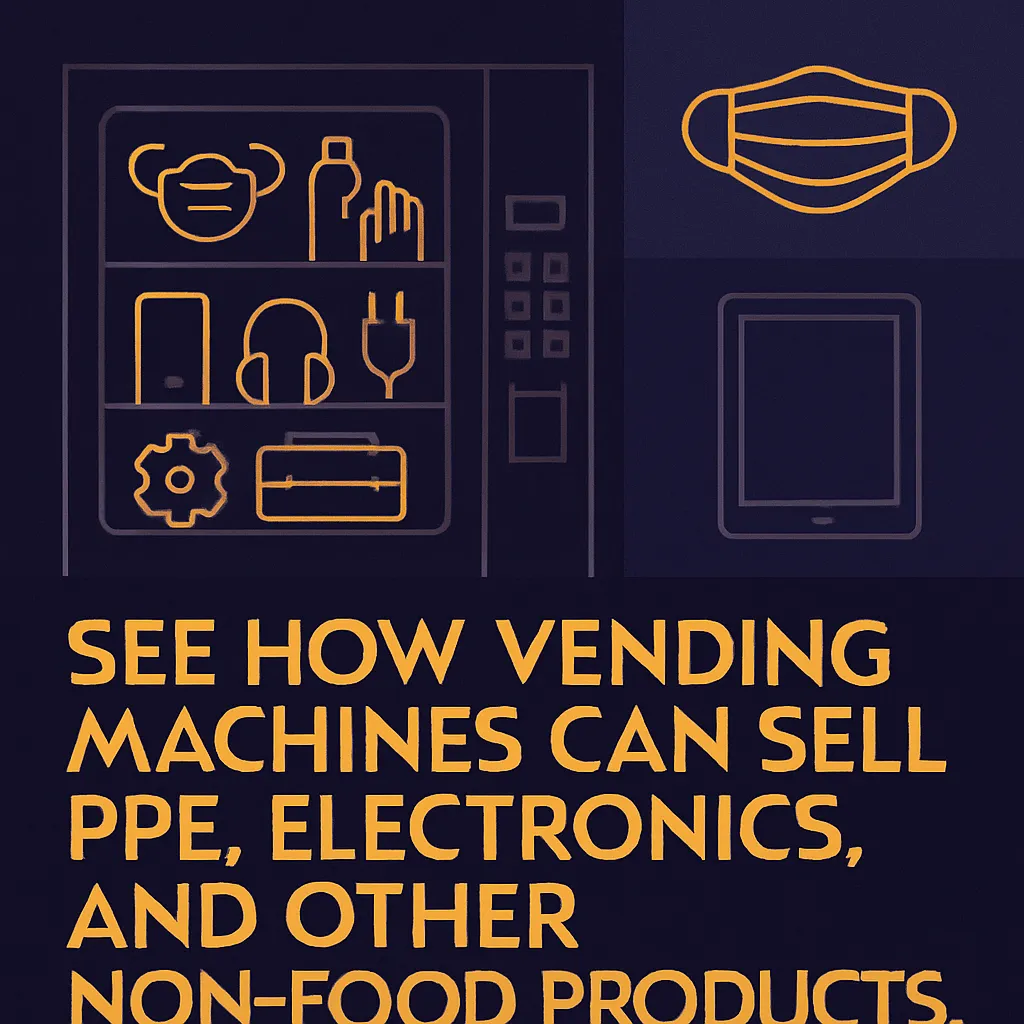Can Vending Machines Dispense Non-Food Items?
See how vending machines can sell PPE, electronics, and other non-food products.
Back to Vending FAQs ResourcesSee how vending machines can sell PPE, electronics, and other non-food products.
Back to Vending FAQs ResourcesModern vending technology has evolved far beyond traditional snacks and drinks, enabling the efficient distribution of a diverse range of non-food items. From essential electronics to personal care products, vending machines offer convenient access when and where consumers need them most.
![]() 24/7 access for a wide range of essential and impulse purchases
24/7 access for a wide range of essential and impulse purchases
![]() Customizable solutions for various product sizes and types
Customizable solutions for various product sizes and types
![]() Efficient inventory management for specialized non-food stock
Efficient inventory management for specialized non-food stock

In today's fast-paced world, convenience is paramount. Vending machines, once relegated to dispensing sodas and candy bars, have dramatically expanded their capabilities to include an impressive array of non-food items. This evolution is driven by technological advancements and a growing demand for instant access to products in diverse locations. From essential personal protective equipment (PPE) to high-tech gadgets and beauty products, specialized vending machines are redefining unattended retail.
The versatility of modern vending technology means almost any small to medium-sized non-perishable item can be sold. Common categories include:
These machines often feature secure compartments, various dispensing mechanisms (like spiral coils, robotic arms, or gravity-fed systems), and robust construction to protect valuable merchandise.
The success of non-food vending largely hinges on strategic placement. They perform exceptionally well in high-traffic areas where immediate needs arise, such as airports, hotels, hospitals, and large corporate campuses. For instance, an airport traveler who forgot their phone charger can quickly purchase one from a vending machine, a service highlighted in discussions around travel essentials vending machines. Similarly, a factory worker needing a new pair of safety gloves can access them instantly without disrupting workflow.
Beyond convenience, these machines offer businesses distinct advantages: 24/7 sales capability without the need for staffing, reduced overhead compared to traditional retail, and precise inventory tracking through telemetry systems. This allows for efficient restocking and a data-driven approach to product selection, mirroring the advanced features seen in AI vending coolers for food items.
The rise of non-food vending machines signifies a broader shift towards automated, customer-centric solutions in retail. As technology continues to evolve, the range of products available through vending will only continue to expand, making convenience more accessible than ever before.
Vending machines can dispense a wide array of non-food items, including electronics, personal protective equipment (PPE), beauty products, office supplies, fishing bait, and even apparel.
Yes, often specialized machines are required. These might include larger compartments, different dispensing mechanisms, or smart locker systems depending on the product's size and fragility.
They are ideal for airports (travel essentials), hospitals (PPE, medical supplies), offices (electronics, stationery), schools (school supplies), and retail environments for impulse buys.
Absolutely. Modern non-food vending machines typically support cashless payments, including credit/debit cards, mobile payments, and sometimes even employee badges or campus cards.
Many advanced non-food vending machines use telemetry and AI to track inventory in real-time, sending alerts for low stock and helping optimize restocking schedules.
Benefits include 24/7 availability for customers, reduced labor costs compared to traditional retail, optimized inventory control, and the ability to serve niche markets efficiently.
Yes, many non-food vending solutions offer high levels of customization, from machine size and compartment configuration to branding and interactive digital displays.
Security is a key feature, especially for valuable items. Machines often include robust construction, internal cameras, and tamper detection systems to protect products.
Pricing can be dynamic or fixed and is typically set to reflect convenience and accessibility, often similar to small retail prices.
The demand for instant gratification, contactless shopping, and efficient distribution channels, especially in high-traffic or niche environments, are driving its growth.